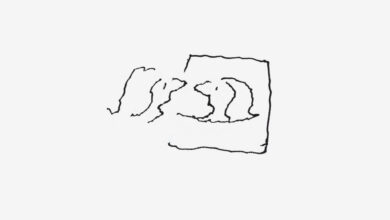You can bid on NFTs associated with Nobel Prize-winning discoveries

How much will someone be willing to pay for a few pages of university bureaucratic paper turned into a blockchain-encoded digital work of art?
The University of California at Berkeley has some hopes and is about to find out.
Berkeley announced Thursday that it will auction the first of two digital works of art known as non-fungible tokens, or NFTs, next week. The object offered is based on a document called the Invention and Technological Disclosure. Berkeley researchers fill out this form to alert the university of discoveries that could potentially be turned into lucrative patents.
The title of the invention, dating from 1996, is "Blocking the Downregulation of T lymphocytes Associated with CTLA-4 Signals".
The university hopes that potential bidders will be attracted by an early description of a revolutionary approach to cancer treatment developed by James P. Allison, then a professor at Berkeley University. He found a way to turn off the immune system's aversion to invading tumors, and he showed it worked in mice.
That advance eventually led to the creation of Yervoy, a drug used to treat metastatic melanoma, and Dr. Allison, who now works at the University of Texas MD Anderson Cancer Center, received the Nobel Prize in Medicine in 2018.
The Berkeley Disclosure Form could therefore be viewed as the scientific equivalent of Mickey Mantle's rookie baseball card – a memento of the beginnings of greatness.
"I almost consider it an artifact in the history of science," said Richard K. Lyons, Berkeley's chief innovation and entrepreneurship officer. "Imagine someone saying," I want to own the NFTs for the 10 most important scientific discoveries of my life. "
A 24-hour NFT auction held by Dr. Allison's invention disclosure takes place as early as June 2nd using Foundation, an NFT auction market that uses Ethereum, the cryptocurrency network of choice for NFT collectors.
Eighty-five percent of the proceeds go to Berkeley to fund research, the rest to the foundation. If the piece is later resold, Berkeley will receive 10 percent of the sale and Foundation will receive 5 percent.
Because making an NFT requires a lot of computing power, some of the money the university makes from selling the NFT is used for carbon offset payments to offset energy usage, Berkeley officials said.
The second NFT that Berkeley plans to auction in the coming weeks is the disclosure form describing the invention of CRISPR-Cas9 gene editing by Jennifer A. Doudna, Professor of Molecular and Cell Biology at Berkeley. She shared the 2020 Nobel Prize in Chemistry with Emmanuelle Charpentier from the Max Planck Department for the Science of Pathogens for her work on the technology.
NFTs have become trendy collectibles in the past few months. A unique code embedded in a digital image or video serves as a record of its authenticity and is stored on a blockchain, the same technology that underlies digital currencies such as Bitcoin. NFTs can then be bought and sold like baseball cards, and the blockchain ensures that they cannot be deleted or forged.
A dizzying array of documents, well beyond traditional works of art, have been sold as NFTs. Jack Dorsey, the founder of Twitter, sold an NFT of his first tweet for $ 2.9 million. Kevin Roose, a columnist for the New York Times, sold an NFT of his article on NFTs for more than half a million dollars. (The money went to the Times' Neediest Cases Fund.)
The pages of Dr. Allison, which are from the Berkeley archives, are mostly dry readable. There is a letter from Carol Mimura, a Berkeley licensing officer, dated July 11, 1995, telling Dr. Allison thanks for reaching out to the university's technology licensing office and asking them to fill out a few forms. Another page contains the Berkeley Patent Policy.
The documents reflect curious archaic technologies used in the mid-1990s – typewriters, fax machines, and handwritten notes. "I will endeavor to protect patentable matters before the end of July," says a memo from Dr. Mimura, now Deputy Vice Chancellor for Intellectual Property and Industry Research Alliances.
A fax from Dr. Allison to Dr. Mimura is a simple table with three lines and 21 data points. "Carol – These are the dates that got us excited," said Dr. Allison scrawled.
His research group experimented with colon cancer in mice and blocked CTLA-4 – a protein receptor that acts as an on and off switch for the immune system – "led to tumor rejection in 5/5 mice," Dr. Allison wrote.
Until now, these forms, which were filed out of sight, had no value, admits Dr. Allison a.
"This very first encounter with the world is something like, 'This is the disclosure of invention,'" he said. "But once they have served that purpose, historically they don't get any more attention."
The NFT idea came from Michael Alvarez Cohen, director of innovation ecosystem development at Berkeley's intellectual property office. He said part of the idea was after the publication of Walter Isaacson's "The Code Breaker," a biography of Dr. Doudna, originated. His friends and relatives told him they didn't know that much of the gene editing technology came from Berkeley.
"So I thought, 'Maybe we should publish excerpts from the invention to encourage this," he said.
At the same time, he followed news on blockchain and NFTs.
"Then I put the two together about a month ago," said Mr. Cohen. Take the inventions disclosures on Nobel Prize winners like CRISPR, turn them into NFTs, "and raise awareness and fund research by auctioning the NFTs."
He sat on the idea for a while.
"I have a lot of ideas," said Cohen. "Some of them are bony-headed and everything."
A little over two weeks ago he started discussing it with his colleagues, and a plan was quickly implemented. In addition to CRISPR, they decided to add Dr. To highlight Allison's work.
The Allison NFT is more than a simple digital document. "It's a combination of a lab notebook and digital art," Cohen said. There are 10 pages in a single picture, but the documents can be enlarged and read. "I really wanted to keep the ability to read the story and see the beauty of the picture," he said.
The designers of the NFT also have subtle allusions to the initial opposition to Dr. Made Allison's ideas. The sides are all sloped slightly because "people looked at him askew," said Mr. Cohen. "There are a lot of such little things in art."
Dr. Lyons hesitated to predict how much the artwork would fetch at auction. "I would be surprised if it cost less than $ 100,000," he said. “It could be seven digits. This is a new category and a new category is difficult to rate. "



